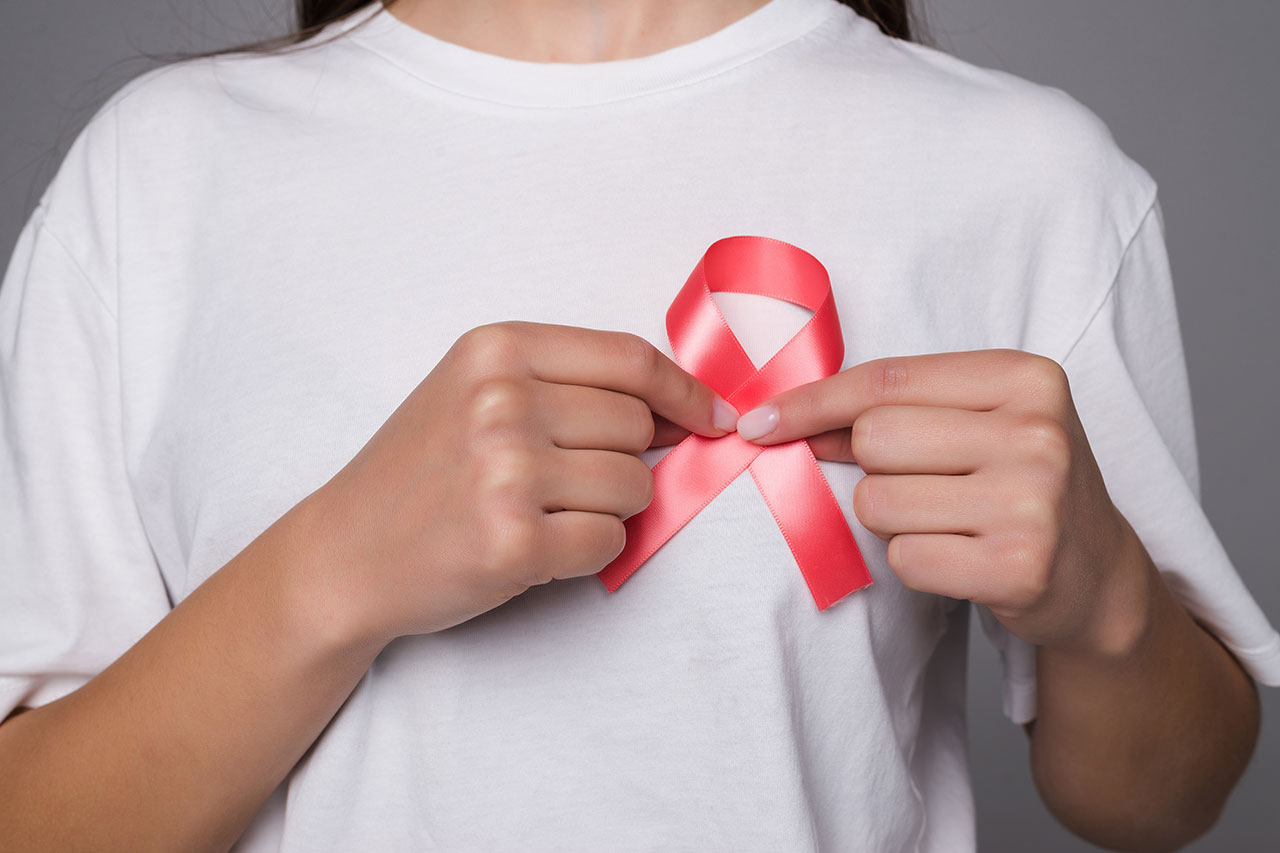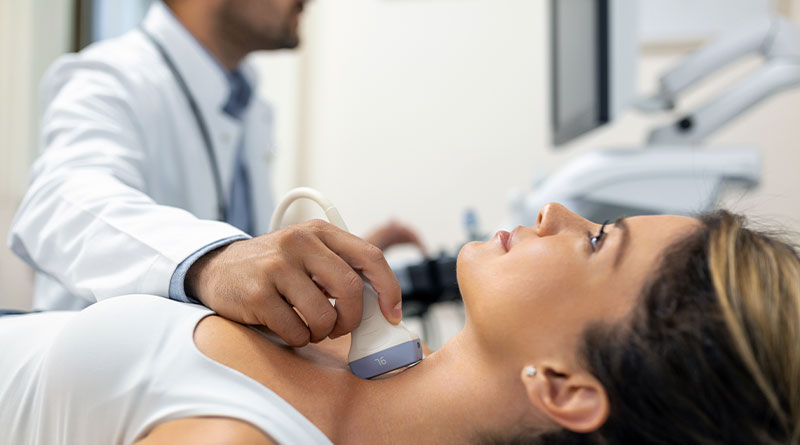Breast cancer is a form of cancer that develops in the breast cells or tissue. It is one of the most common cancers in women and can also affect men. It is a complex disease that can have different types, stages, and treatment options.
The growth of breast cancer typically originates from the uncontrolled proliferation of cells within the breast tissue. This abnormal cell growth can result in the formation of a lump or mass, as well as the potential to spread to other areas of the body.
Also Check: Causes of Low Libido
The causes of breast cancer are not fully understood, but certain risk factors can increase a person’s chances of developing the disease.
Symptoms of Breast Cancer
Breast cancer can have a range of symptoms, and it’s important to note that not all breast changes are indicative of cancer. However, it’s always best to consult a healthcare provider if you experience any changes in your breasts.
Breast cancer can present with a variety of symptoms, some of which may include:
- Breast pain or discomfort
- Breast skin changes, such as itching, rash, or thickening
- Changes in the appearance of the breast, such as asymmetry, dimpling, or puckering
- Nipple changes, such as discharge, inversion, or retraction
- Swelling in the breast or underarm area
- A palpable lump or mass in the breast or underarm area
- Enlarged lymph nodes in the armpit
Risk Factors of Breast Cancer
There are certain factors that may increase an individual’s risk of developing breast cancer, including:
- Age: Age is a significant factor in breast cancer risk, with the likelihood of developing the disease increasing as a person ages. The majority of breast cancer diagnoses occur in women who are 50 years of age or older
- Gender: Breast cancer is more prevalent in females than in males, with women being at a significantly higher risk of developing the disease than men.
- Family history: A person’s risk of breast cancer increases if they have a family history of the disease, especially if a close relative (such as a mother or sister) has been diagnosed.
- Genetics: Some genetic mutations (such as BRCA1 and BRCA2) can increase a person’s risk of breast cancer.
- Hormonal factors: Certain hormonal factors, such as the early onset of menstruation, the late onset of menopause, and having children later in life, can increase the risk of breast cancer.
- Lifestyle factors: Factors such as smoking, alcohol consumption, and a lack of physical activity can increase the risk of breast cancer.
It’s important to note that having one or more of these risk factors does not necessarily mean a person will develop breast cancer, and many people with breast cancer have no known risk factors.
Also Check: Pornography Addiction
Early Detection
Breast cancer is most treatable when it is detected early. That’s why it’s important for women to have regular breast screenings, including mammograms. The American Cancer Society recommends that women at the average risk of breast cancer start getting mammograms at age 45, and women at higher risk may need to start earlier.
Aside from regular mammograms, it is important for women to monitor their breast health, paying attention to any changes that may occur and promptly informing their healthcare provider of any concerns. This includes changes in the breast size, shape, or texture, as well as nipple changes or discharge.
Treatment Options for Breast Cancer
The treatment for breast cancer will depend on the type and stage of cancer, as well as the person’s overall health and preferences. Some of the treatment options include:
- Surgery: This may involve removing just the cancerous lump (lumpectomy) or the entire breast (mastectomy).
- Radiation therapy: Radiation therapy is a treatment option for breast cancer that involves the use of high-energy radiation to eliminate cancer cells.
- Chemotherapy: Chemotherapy is a treatment method that involves administering medication to destroy cancer cells throughout the body.
- Hormone therapy: This uses medications to block the effects of hormones (such as estrogen) that can fuel the growth of certain types of breast cancer.
- Targeted therapy: This uses drugs that specifically target certain proteins in cancer cells.
Depending on the individual case, a combination of these treatment options may be utilized. It’s important to discuss the potential risks and benefits of each treatment with your healthcare provider to determine the best course of action. If you or someone you know has been diagnosed with breast cancer, it can be overwhelming and scary. But it’s important to remember that there are resources and support available.
Coping and Support
It’s important for people with breast cancer to have a strong support system and access to resources to help cope with the physical and emotional effects of the disease.
Individuals with breast cancer can receive support from a variety of sources, including friends, family members, healthcare providers, and support groups. Some people may benefit from talking with a therapist or counselor to help manage anxiety, depression, or other emotional challenges.
Also Check: Menstrual Irregularities
In addition to emotional support, there are also resources available to help with practical aspects of breast cancer treatment, such as financial assistance or transportation to appointments.
Breast Cancer Lifestyle Changes
While there is no guaranteed way to prevent breast cancer, there are lifestyle changes that may help reduce the risk. These include:
- Maintaining a healthy weight: is crucial, as being overweight or obese can significantly raise the risk of breast cancer, particularly among postmenopausal women.
- Exercising regularly: Physical activity can help reduce the risk of breast cancer.
- Limiting alcohol consumption: Excessive alcohol consumption, particularly over a prolonged period, has been linked to an increased risk of developing breast cancer.
- Quitting smoking: Smoking is a known risk factor for several types of cancer, including breast cancer.
It’s important to stay up to date with recommended breast cancer screenings and talk with your healthcare provider about any concerns or questions you may have.
FAQs
Q: How is breast cancer diagnosed?
Ans: Breast cancer can be diagnosed through a variety of tests, including mammography, ultrasound, MRI, biopsy, and blood tests.
Q: Can breast cancer be prevented?
Ans: While there is no sure way to prevent breast cancer, there are some steps you can take to reduce your risk, such as maintaining a healthy weight, exercising regularly, limiting alcohol consumption, and breastfeeding.
Q: What are the survival rates for breast cancer?
Ans: The survival rates for breast cancer vary depending on the stage of cancer at the time of diagnosis. Generally, the earlier the cancer is detected and treated, the better the chances of survival.
Also Check: Ways to Improve Your Kidney Health
Q: What is the role of genetic testing in breast cancer?
Ans: Genetic testing can help identify individuals who may be at increased risk for developing breast cancer due to certain gene mutations.
Conclusion
Breast cancer is a complex disease that can affect anyone. It’s important to be aware of the risk factors and take steps to reduce your risk, including maintaining a healthy lifestyle and getting regular breast screenings. If you or someone you know has been diagnosed with breast cancer, there are resources and support available to help cope with the physical and emotional challenges of the disease.
With early detection and appropriate treatment, many people with breast cancer can go on to live healthy, fulfilling lives.
Sahil Sachdeva is the Founder of curemedoc.com and a Digital Marketing professional with 6+ years of experience. If you need help in Content writing and want to increase your website ranking, connect with him, as he has some premium websites where you can share blogs with DoFollow links and increase your website’s ranking on Google.





